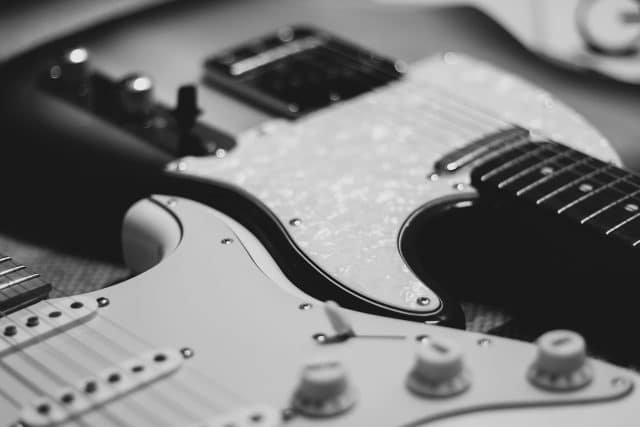Do you find yourself losing focus and direction during you sound design sessions?
Sound design is one of the most important skills to learn if you are an electronic music producer.
Let’s check 10 sound design tips to improve your skills: Fire up your synth and let’s get started!
1. Read the manual:
This is probably one of the most underestimated sound design tips there is. Complex synths, gears, or plugins require a comprehensive explanation, and that’s what the user manual is about. It is true that, a poorly written and unorganized manual can quickly become boring and useless for a nonprofessional due to its complex, unworkable theories. But most of the time they are really worth a read! We are pretty sure that you would be amazed by the wide variety of helpful information you can learn.
Both Serum and Massive user manual contain tons of incredibly useful sound design tips about synthesis, so why not have a look ?

2. Organize sound design sessions
This is another common sound design tips, but it also tends to be overlooked. It’s crucial to focus on your composition during your production session and not to cut off your creative flow. But you should also save some time for sound design, by setting some simple goals to accomplish in a set amount of time, like designing 5 or 10 synth presets that you really love and will likely re-use later. Spend some time on it regularly to master the tools you like, and also allocate some time to discover new techniques and try new tools. Finally spending some time reverse engineering well crafted presets will definitely help in developing your own skills.
3. Practice your art and work hard
Nobody is born great, every musician or sound designer has bad days or sometimes does not feel like creating anything. But the harder you try, the better you get, the faster you can do it, and the stronger you’ll become. You know that formula right? Hard workers never give up, and this is what helps build their sound design skills. In order to not only compete, but succeed in this ultra-creative task, it’s absolutely vital to be on top of your game at all times, and be consistently raising the bar, educating yourself by practicing and enjoying the process.

4. Keep things organized
Easier said than done, but a creative and productive workflow requires organization and efficiency. Knowing that this aspect isn’t always the most thrilling part of music creation and sound design, you have to think about the close relationship between creativity and organization! If you’re not organized, it will stand in the way of delivering the content that will make you musically or artistically successful. Nowadays, most DAWS provide numerous ways to organize your sessions with groups, bus, colors, names, and so on. This is a good thing to apply to your file management during your sessions or post production: arrange, sort, group, and name your files (or presets!) as specifically as you can, so that you can find them easily when you need them!

5. Try new things
We cannot stress this enough. Sound design isn’t an easy task, you must be prepared to fail and make mistakes. If you don’t (at least occasionally) then chances are you’re doing something wrong ! You will certainly make some useless and stupid sounds/presets or whatever you’re trying to create. But you need to innovate at some point to create something REALLY new. Let’s see how far you can go in a way that you would not normally take, push outside your comfort zone, challenge yourself with new things. You may be surprised at the results of what you can achieve or how you can do it. If sound design is an art for you, then you need to further your craft!
6. Reverse, stretch, pitch, repeat
These very simple tasks can do wonders and take your sounds to a whole new level. Choose a file from your DAW or favorite sampler, and feel free to experiment with audio manipulating, you’ll be surprised how much you can achieve without a single plugin. The good thing is, you can try it with pretty much anything from vocals to bass, drums, or instruments. There’s always something interesting to create through these basic manipulations.
7. Noise is an incredibly useful tool too
This is maybe a less common sound design tips, but if you haven’t deeply experimented with noise, then you really should. From adding punch, to thickness or density, noise – in all its white, pink, brown or other forms – is an incredibly useful tool. While pink noise is the type of noise to use to calibrate audio equipment or set up the global tone of a mix, white noise can bring character and fullness to a dull sound. There’s litteraly a myriad of things you can do with noise !
It’s also an essential tool to create synthetic percussions like snares or hats, sound effects, as well as a wide range of sounds. Moreover, a majority of synths (even free ones) provide a noise generator.


8. Learn to play an instrument and a bit of music theory
Take some lessons and put in the hours–even a little knowledge of an instrument will go a long way in the studio. Virtuosity is not the goal. Play some simple chords or melodies, hit some drums, thump along to some bass or strum a guitar. Get a feel for what they do, understand these instruments and how they work, and you’ll likely improve your sound design skills more than you thought possible from these new points of view.
9. Listen to as much as possible
Listening should never be a passive activity for a sound designer; it is your duty to have a large palette of sounds and ideas to draw from when creating sounds. But you also need to get inspired by music or sounds that you like. At this point, listen to the voice in your head that says “let’s try adding a different texture, like in that {insert newly discovered artist or song here} ». The results will not always be what you want, but you’ll be moving the process forward, and finding your way towards YOUR perfect sound.
10. Listen in a different way though
You probably may have seen the meme below already right ? Well it makes more sense than you think !
Listen not just to melodies, harmonies, or rhythms, but pay particular attention to HOW these sounds are done, and HOW you could try to recreate them with the tools you have mastered. Ask yourself WHAT processing sticks out and makes this sound great, then dissect it and see WHY it sounds great. Well, to you at least !

At the end of the dayIt's all about learning
Well that’s it for these 10 sound design tips:
See ? It’s all about learning again, and enjoying it… so have fun !

